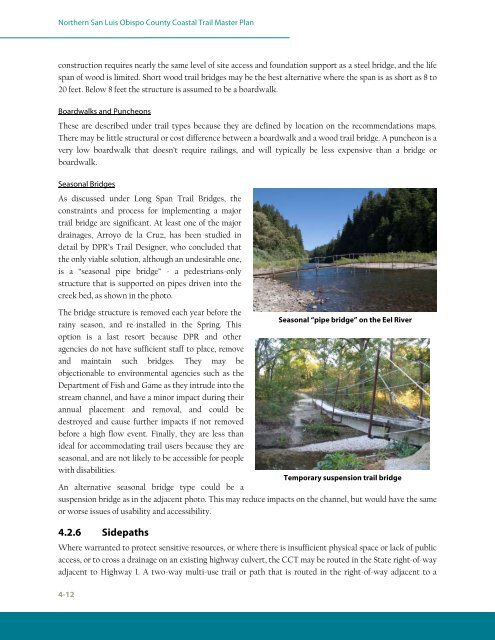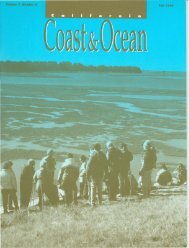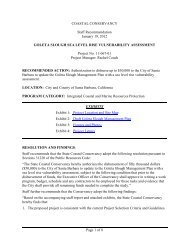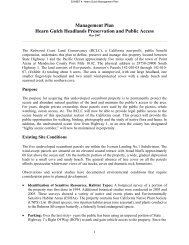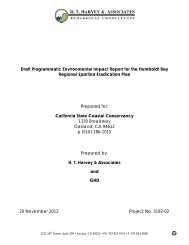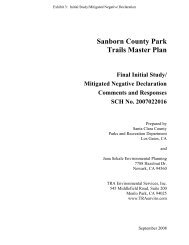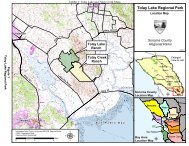Northern San Luis Obispo County Coastal Trail Master Plan
Northern San Luis Obispo County Coastal Trail Master Plan
Northern San Luis Obispo County Coastal Trail Master Plan
Create successful ePaper yourself
Turn your PDF publications into a flip-book with our unique Google optimized e-Paper software.
<strong>Northern</strong> <strong>San</strong> <strong>Luis</strong> <strong>Obispo</strong> <strong>County</strong> <strong>Coastal</strong> <strong>Trail</strong> <strong>Master</strong> <strong>Plan</strong><br />
construction requires nearly the same level of site access and foundation support as a steel bridge, and the life<br />
span of wood is limited. Short wood trail bridges may be the best alternative where the span is as short as 8 to<br />
20 feet. Below 8 feet the structure is assumed to be a boardwalk.<br />
Boardwalks and Puncheons<br />
These are described under trail types because they are defined by location on the recommendations maps.<br />
There may be little structural or cost difference between a boardwalk and a wood trail bridge. A puncheon is a<br />
very low boardwalk that doesn’t require railings, and will typically be less expensive than a bridge or<br />
boardwalk.<br />
Seasonal Bridges<br />
As discussed under Long Span <strong>Trail</strong> Bridges, the<br />
constraints and process for implementing a major<br />
trail bridge are significant. At least one of the major<br />
drainages, Arroyo de la Cruz, has been studied in<br />
detail by DPR’s <strong>Trail</strong> Designer, who concluded that<br />
the only viable solution, although an undesirable one,<br />
is a “seasonal pipe bridge” - a pedestrians-only<br />
structure that is supported on pipes driven into the<br />
creek bed, as shown in the photo.<br />
The bridge structure is removed each year before the<br />
rainy season, and re-installed in the Spring. This<br />
option is a last resort because DPR and other<br />
agencies do not have sufficient staff to place, remove<br />
and maintain such bridges. They may be<br />
objectionable to environmental agencies such as the<br />
Department of Fish and Game as they intrude into the<br />
stream channel, and have a minor impact during their<br />
annual placement and removal, and could be<br />
destroyed and cause further impacts if not removed<br />
before a high flow event. Finally, they are less than<br />
ideal for accommodating trail users because they are<br />
seasonal, and are not likely to be accessible for people<br />
with disabilities.<br />
An alternative seasonal bridge type could be a<br />
suspension bridge as in the adjacent photo. This may reduce impacts on the channel, but would have the same<br />
or worse issues of usability and accessibility.<br />
4.2.6 Sidepaths<br />
Where warranted to protect sensitive resources, or where there is insufficient physical space or lack of public<br />
access, or to cross a drainage on an existing highway culvert, the CCT may be routed in the State right-of-way<br />
adjacent to Highway 1. A two-way multi-use trail or path that is routed in the right-of-way adjacent to a<br />
4-12<br />
Seasonal “pipe bridge” on the Eel River<br />
Temporary suspension trail bridge


